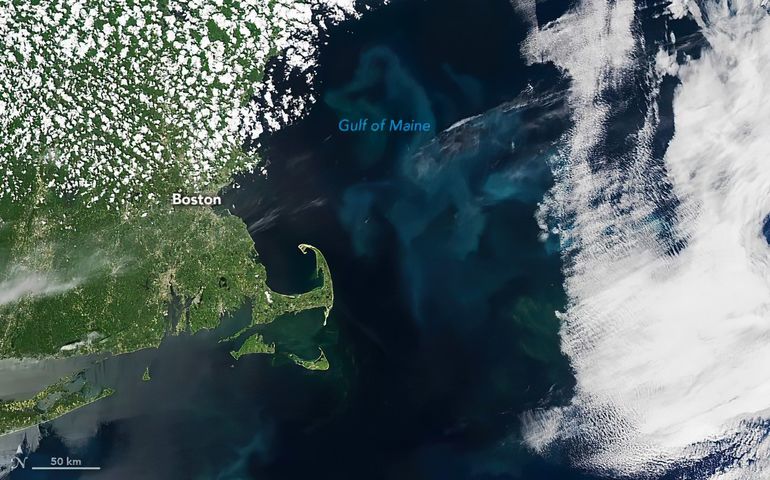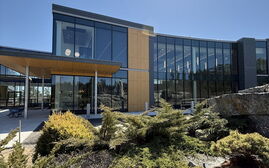
65% drop in marine organism production could lead to Maine fishery losses
 Courtesy / NASA Earth Observatory
A 65% drop in phytoplankton productivity affects all marine organisms and the fisheries that depend on them, according to a new study.
Courtesy / NASA Earth Observatory
A 65% drop in phytoplankton productivity affects all marine organisms and the fisheries that depend on them, according to a new study.
Climate change is punishing the Gulf of Maine, leading to warmer and saltier water that’s destabilizing the food web — and potentially the region’s fisheries.
That's the conclusion of a study recently led by William Balch, a biological oceanographer at Bigelow Laboratory in Boothbay Harbor.
Over the past two decades, productivity of phytoplankton in the fishery-heavy waters has dropped 65%, the study found.
“Phytoplankton are at the base of the marine food web on which all of life in the ocean depends, so it’s incredibly significant that its productivity has decreased,” said Balch.
“A drop of 65% will undoubtedly have an effect on the carbon flowing through the marine food web, through phytoplankton-eating zooplankton and up to fish and apex predators.”
Like plants on land, phytoplankton absorb carbon dioxide from the atmosphere and use photosynthesis to grow, and then become a food source for other organisms. Disruptions to their productivity can lead to adverse effects on the region’s fisheries and the communities that depend on them.

The gulf is getting warmer and saltier due to ocean currents pushing in warm water from the northwest Atlantic, prompting the loss, according to the study, published in the Journal of Geophysical Research Biogeosciences.
Windmill effect
The Gulf of Maine stretches from Cape Cod in Massachusetts to the southern tip of Nova Scotia and helps fuel New England’s marine ecosystems and economy.
Study results come from the research team’s analysis of the Gulf of Maine North Atlantic Time Series, a 23-year sampling program of the temperature, salinity, chemical, biological, and optical measurements of the gulf. The measurements are considered critical to make sure satellite observations from space are accurate.
Balch said the changes that they are recording show an intricate connection between the gulf and the greater Atlantic Ocean.
“It’s all being driven by this gigantic windmill effect happening out in the North Atlantic, which is also changing the circulation coming into the Gulf of Maine,” Balch said. “There used to be these inflows from the North Atlantic bringing water from the southward-flowing Labrador Current, making the gulf cooler and fresher, as opposed to warmer and saltier, which is where we are now.”
Since 1998, the Bigelow Laboratory has tracked several biogeochemical changes in the gulf with the time series. The team collects samples via commercial ferries and research vessels running the same routes repeatedly. They also use autonomous gliders that cross the same sampling line.
The time series’ dataset ultimately will compare changes observed directly on the gulf’s surface waters to observations by NASA satellites acquiring ocean color data. The measurements complement satellite observations from space that can sometimes be clouded by fog.
Data on the many colors of the ocean associated with different concentrations of phytoplankton are expected to contribute to upcoming observations by a NASA mission in 2024. The Plankton, Aerosol, Cloud, Ocean Ecosystem (PACE) mission will help study phytoplankton communities and track harmful algal blooms that can disrupt ecosystems, fisheries and tourism in the Gulf of Maine.
“We are focused very much on that lower level, the phytoplankton level,” said Catherine Mitchell, an oceanographer at Bigelow Laboratory and a study coauthor. “But the changes at that level can have all these implications at the higher species, the fisheries, the lobster, and all those kinds of industries that are important within the state of Maine and other states that border the gulf.”
For the full report, click here.














0 Comments